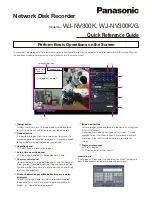
39
Va l l ott i o r Fa i r c h i l d Tem pe rament
(REF: Piano Technicians Journal, Oct. 82, p.20.)
Steve Fairchild independently developed this temperament in 1982 while looking for a
temperament to smooth out the simple keys on small pianos. It greatly reduces the harshness
caused by excessive inharmonicity, and for that reason could also be called the "Piano Teacher's
Delight" temperament.
A 0.0
C#
0.0
F 7.8
A# 5.9
D
2.0
F# -2.0
B -3.9
D# 3.9
G 3.9
C 5.9
E -2.0
G# 2.0
Ce nt s O ff set f o r Hz at A4
Freq uen cy of A4
Ce nt s O ff set
Freq uen cy of A4
Ce nt s O ff set
446 23.5
438 -7.9
445 19.6
437 -11.8
444 15.7
436 -15.8
443 11.8
435 -19.8
442
7.9 430
-39.8
441
3.9 420
-80.5
440 0.0
415.3
-100.0
439 -3.9
415
-101.3
Formula for calculating cents offset of A4 at 420Hz: Log (420/440, 2)*1200 = -80.54
APPENDIX C
Au ra l a n d V i s ua l T u n i n g
(The best of both worlds)
By James W . C o leman , S r .
Owen Jorgenson wrote the definitive work on temperaments and tuning. In his book "Tuning the
Historical Temperaments" he traces the natural progress of aural tuning systems from the
Pythagorean and Just Intonation systems through several Meantone temperaments to the Well
temperaments and the Equal temperament. It is this last system in which most piano technicians
are engaged. The basis of this system is the need or desire to be able to play in all keys with
equally out of tune parallel intervals. This need was borne out of the practice of composers who
became far ranging in their tonalities of a particular composition.
The earliest popular approaches to tuning the equal temperament involved tuning a series of
twelve 4ths or 5ths such that each 5th was narrowed slightly and each 4th was widened slightly
in such a way that they were all equally out of tune. The difficulty with this approach was that it
took 12 steps before one could tell if he was doing alright.
More recent approaches to equal temperament involve one or two test intervals for each step
taken in the tempering system. More care is being given to insure that each interval (such as the
minor 3rds, major 3rds, 4ths, 5ths, minor 6ths, major 6ths) is equally tempered and is compatible
with all its parallel similar intervals. Some of the more popular recent temperament systems are
by George Defebaugh, Bill Stegeman, Dr. Al Sanderson (2 octave A-A temp) James Coleman (F-A
temp) and Mark Peele (10th temp). These may be seen demonstrated at various Piano
Technician's Guild Institutes, Conferences and Seminars.
Since the Stretch Calculator tunings involve the accurate tuning of the 4th partial of each note in
the F-F temperament, all the intervals which involve the 4th partials will be beautifully tempered
(such as major 3rds, 4ths). Other intervals such as minor 3rds, major and minor 6ths, which are
involved with higher order partials, will also be beautifully tempered. Since the greatest









































